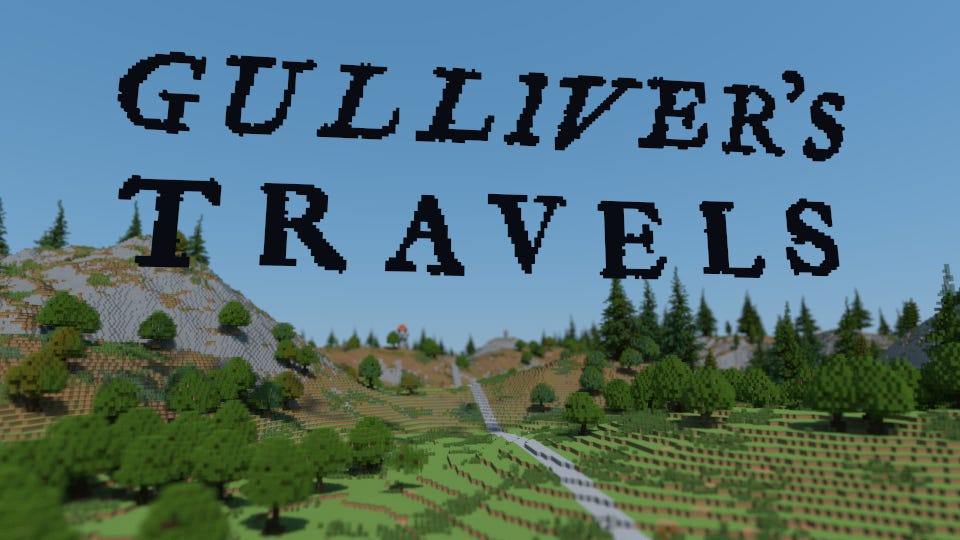The Power of Storytelling in Minecraft
How crafting narratives in a digital world builds creativity, connection, and life skills.
Minecraft isn't just about building—creating worlds, adventures, and stories. The game's open-ended nature allows kids to unleash their imaginations, weaving narratives that entertain and build essential skills like language development, problem-solving, and creativity.
At WonderBoxEdu, storytelling is a powerful tool for learning. When kids craft stories in Minecraft, they're playing and practising skills that will serve them for a lifetime.
How Minecraft Enhances Storytelling Skills
Boosts Language Development: Crafting a story requires kids to think about characters, dialogue, and plot structure. Whether writing a backstory for their castle or narrating an epic journey, they're expanding their vocabulary and honing communication skills.
Encourages Creative Thinking: Building a story in Minecraft requires imagination. Kids can create fantastical landscapes, design unique characters, and solve challenges in innovative ways.
Fosters Collaboration: Kids often work in multiplayer mode to create shared narratives. This teaches teamwork, negotiation, and weaving multiple ideas into a cohesive story.
A Real-World Example: Thumbelina and Gulliver's Travels in Minecraft
One of my favourite aspects of storytelling is playing with scale and perspective. I've enjoyed working on projects that creatively explore this theme.
I recreated Gulliver's Travels in Minecraft with Lancaster University, allowing kids to enter the story, interact with its characters, and experience Jonathan Swift's world through changing scales and viewpoints. The project was immersive, blending narrative with exploration and problem-solving.
Similarly, I collaborated with the Hans Christian Andersen Museum to create a Thumbelina story in Minecraft. Like Gulliver's Travels, this project focused on shifting perspectives—shrinking players to Thumbelina's size and letting them navigate her tiny world. These projects proved how Minecraft can make classic tales come alive, offering children a unique and memorable way to engage with literature and storytelling.
Intergenerational Storytelling Challenges
Storytelling doesn't have to happen in isolation—Minecraft offers a unique way to connect generations through shared creativity. Here are some challenges that bring families together to build and share stories:
Recreate a Childhood Home
How It Works: Ask a grandparent or older relative about the house they grew up in. Please encourage your child to ask questions about its layout, colours, and details. Then, work together to build it in Minecraft.
Why It's Great: This activity sparks conversations about family history and creates a visual representation of memories. When the build is complete, guide the older relative through the house in Minecraft—it's a heartwarming way to connect through storytelling.
Build a Timeline of Family Memories
How It Works: Use Minecraft to create a "Memory Pathway" where each stop represents a key event in your family's history. For example, one stop could be a wedding, another a childhood vacation spot, or even the year a child was born. Add signs or books in Minecraft to narrate each event.
Why It's Great: This activity helps children understand their family's story while practising sequencing and historical thinking.
Build a Shared Garden
How It Works: Collaborate to create a Minecraft garden that reflects a mix of favourite plants, flowers, and designs from each family member. Add a small story about how the garden grows and who tends it.
Why It's Great: This activity is a relaxing, collaborative way to share ideas and explore gardening concepts virtually.
Try This Narrative Challenge at Home
Challenge: Create a Quest for the Lost Treasure
Set the Scene: Ask your child to imagine a mysterious land filled with danger, hidden treasure, and legendary heroes. They'll build this world in Minecraft, designing landscapes like forests, caves, and castles.
Write the Story: Have them create a straightforward quest narrative. For example:
The hero (their Minecraft character) must find a hidden treasure deep within a mountain.
Along the way, they encounter challenges like solving puzzles, battling mobs, or navigating tricky terrain.
They meet NPCs (non-player characters) who give clues or riddles to guide them.
Play the Story: Once the world is built and the story is written, they can act out the quest. Invite family members to join as characters or adventurers.
Reflect: After completing the quest, talk about the story. What was the best part? Were there unexpected challenges? How would they improve or expand the tale?
The Outcome: This activity boosts creativity and strengthens narrative skills, critical thinking, and the ability to see a project through from start to finish.
Help Us Reach 100 Subscribers!
At WonderBoxEdu, we're on a mission to inspire creativity and learning through Minecraft. We're aiming for 100 free subscribers, and once we hit this milestone, we'll release an exclusive free Minecraft map to everyone who signed up!
This is the perfect chance to experience how Minecraft can turn screen time into storytelling. Don't miss out—subscribe today and help us reach our goal!
Share, Share, Share!











